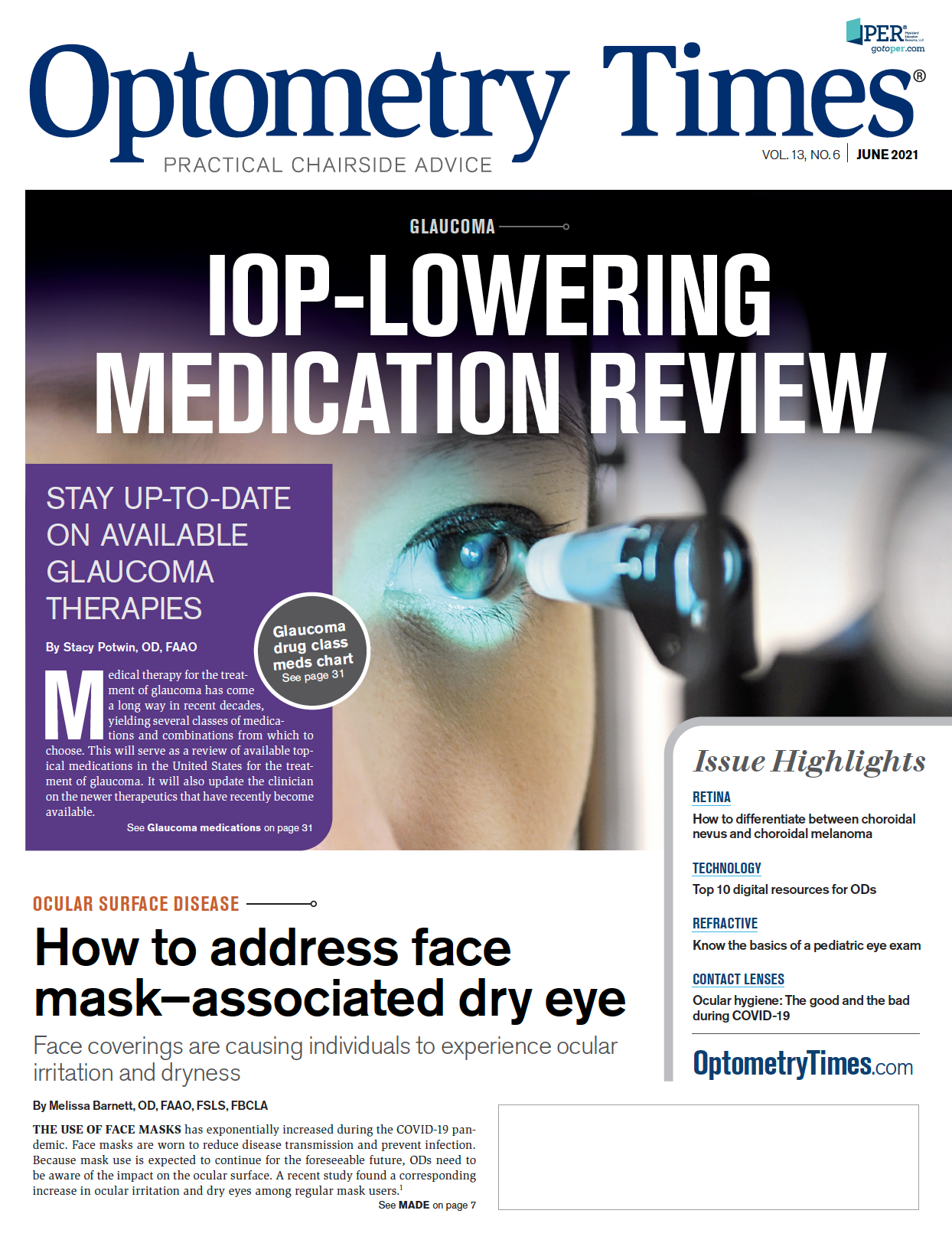Why ODs should prepare patients for surgery years before they need it
The earlier patients are prepared for surgery, the better the outcomes will be


The time to start thinking about preparing patients for surgery is not when they want or need it but rather in visits prior. Another way of stating this obvious and yet seemingly unpracticed mode of care is to prepare for the worst and hope for the best.
The ocular surface is the refractive epicenter of the eye, and thus needs undivided attention at every patient encounter. Research has shown that there is an accumulative effect of inflammation and dryness that can not only impede healing, but also alter surgical calculations.1,2 Additional research shows that meibomian glands are negatively affected at earlier and earlier ages.
So, how can ODs combat this? It’s all about anticipation. The simplest answer to the question, “When do we start planning to prepare the ocular surface for potential surgery?” is, “At your last visit.”
Proactive mind-set
Take the edict that every patient is a dry eye patient until proven otherwise. Every meibomian gland is starting to atrophy or the meibum is altered until eyecare practitioners don’t see those changes. All lids have an overabundance of Demodex, most notably cylindrical dandruff, unless you don’t see it—because you looked.
Eye care clinicians are tasked with protecting sight, yet we don’t use our sight or insight when we need to prevent surface damage.
As an ideological posture, assuming everyone has ocular surface disease (OSD) until proven otherwise works if we lived and worked in a vacuum. However, the eyes of this generation are taxed greater than any other. It is naive to think that OSD will not rear its ugly head if we engage unchecked in pesky OSD-altering habits. In other words, we can’t expect that continuous use of our peepers will not erode the OSD faster and sooner without doing something to slow it down. I tried that with my teeth, and let me just say that I should have been flossing for decades.
Preventive care
The good news is that eye care practitioners have scores of unintrusive and intuitive options to help patients start preparing early for a post-OSD era. For example, a universal battle cry now of every eye clinician is, “Stop, collaborate, and look away from your monitor!” That is the former 20/20/20 rule modified to sound cooler as a 1980s 1-hit wonder.
Fitting contact lens patients with daily disposable lenses, incorporating lid hygiene, using immunomodulating anti-inflammatory drops to increase tear production (and increase wear time) are efforts to avoid the exodus of contact lens dropout around age 40 or 50 years.
Will using a moist heat mask on the lids regularly, at a younger age, ward off obstruction of the meibomian glands? Most likely. At best, it may be like brushing your teeth daily while consuming an oral cornucopia of sugary treats. To break this point down, anything we implement now is only going to help in the future.
Now, without the opportunity to go all Doc Brown and go back to the future, ODs must become myopic when preparing a patient for surgery. Fortunately, ODs have treatment tricks.
Treatment options
This year eyecare practitioners saw the first approval of a topical corticosteroid (Eysuvis, loteprednol etabonate ophthalmic suspension 0.25%; Kala Pharmaceuticals) indicated for the short-term (up to 2 weeks) treatment of the signs and symptoms of dry eye disease (DED).
Another available option is the use of an amniotic membrane to improve overt dryness or help smooth irregular corneas afflicted with corneal dystrophy. Although the latter may require corneal debridement in coordination with cryopreserved amniotic membrane, the former can be treated with a cryopreserved membrane alone.
Another quick and important element is cleaning the lid margin of offending inflammatory debris. Microblepharoexfoliation treatments can accomplish this prior to any surgical treatment. Using hypochlorous acid to clean the lids has also been very effective at quickly eradicating pesky bugs.
The focus on the lids is easier with meibography. Akin to using tomography to assist in refractive surgery, meibography gives a landscape of the glands. Not only does this visual assess the current and future potential of the glands, but it is a clear picture from which patients can understand the consequences of their actions. Meibography, in my opinion, should be performed at all examinations regardless of patient age. By using symptoms and glands as a road map, we can prepare patients for further treatments.
Thermal pulsation may be needed prior to presurgical evaluation. However, when more time is available, an intense pulsed light (IPL) procedure could and should be implemented.
Conclusion
ODs exhibit countless examples of proactive preparedness it without thinking twice. We owe it to our patients to start a pre-surgery dialogue and treatment course far in advance of any actual procedure. When is a good time to implement this mind-set? I would set the year in the DeLorean to 1985, or at least to now.

References
1. Epitropoulos AT, Matossian C, Berdy GJ, Malhotra RP, Potvin R. Effect of tear osmolarity on repeatability of keratometry for cataract surgery planning. J Cataract Refract Surg. 2015;41(8):1672-1677. doi: 10.1016/j.jcrs.2015.01.016
2. Tichenor AA, Ziemanski JF, Ngo W, Nichols JJ, Nichols KK. Tear film and meibomian gland characteristics in adolescents. Cornea. 2019;38(12):1475-1482. doi:10.1097/ ICO.0000000000002154

Newsletter
Want more insights like this? Subscribe to Optometry Times and get clinical pearls and practice tips delivered straight to your inbox.